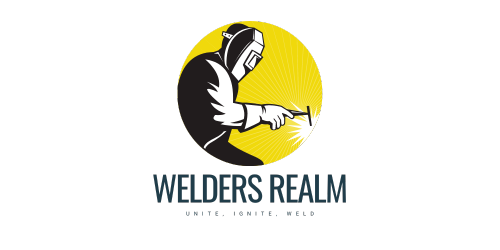Did you ever wonder how those sleek airplanes stay together in the sky? Well, it’s all thanks to aviation welding! Aviation welding is a specialized type of welding that is crucial in the construction and maintenance of aircraft. From joining metal parts together to repairing structural damages, aviation welding plays a vital role in ensuring the safety and longevity of airplanes. In this article, we will explore what aviation welding is all about and how it works. So buckle up and get ready to take flight into the world of aviation welding!
Understanding Aviation Welding
Aviation welding is a specialized form of welding that is used in the aerospace industry to join and repair metal components in aircraft and other aviation-related structures. This process plays a crucial role in ensuring the safety and reliability of aircraft by creating strong and durable welds that can withstand the harsh conditions of flight. In this article, we will explore the definition of aviation welding, the various types of welding techniques used in aviation, the materials commonly welded in the industry, the challenges faced by aviation welders, and the safety measures and qualifications required for this field. We will also discuss the technological advancements and career opportunities in aviation welding, as well as the future growth and impact of this field.
Definition of Aviation Welding
Aviation welding can be defined as the process of joining two or more metal parts using various welding techniques in the aerospace industry. This process involves melting the edges of the metal parts to be joined and allowing them to fuse together, creating a strong and permanent bond. The welds created through aviation welding must meet strict quality standards to ensure the structural integrity of the aircraft.
Varieties of Aviation Welding
Aviation welding encompasses several different welding techniques that are used depending on the specific requirements of the job. Some of the most commonly used techniques in aviation welding include gas tungsten arc welding (GTAW), spot welding, laser welding, and electron beam welding. Each technique has its own advantages and is used for different types of joints and materials.
Role of Aviation Welding in the Aerospace Industry
Aircraft Manufacturing and Repair
One of the primary roles of aviation welding is in the manufacturing and repair of aircraft. During the manufacturing process, aviation welders join various metal components together to create the airframe, engine mounts, landing gear, and other structural elements of an aircraft. In addition, aviation welders are responsible for repairing and maintaining aircraft by fixing damaged or worn-out parts through welding techniques.
Importance of Precision and Quality in Aviation Welding
Aviation welding requires a high level of precision and quality due to the critical nature of the components being welded. Any defects or imperfections in the welds could compromise the structural integrity of the aircraft, leading to catastrophic consequences. Therefore, aviation welders must adhere to strict quality control measures and follow industry standards to ensure the highest level of precision and quality in their work.
Regulations Governing Aviation Welding
Aviation welding is subject to stringent regulations and standards set by aviation regulatory bodies, such as the Federal Aviation Administration (FAA) in the United States. These regulations dictate the specific welding techniques, materials, procedures, and qualifications that must be followed in aviation welding. The purpose of these regulations is to ensure the safety and airworthiness of aircraft by maintaining the highest standards of welding in the industry.
Techniques Utilized in Aviation Welding
Gas Tungsten Arc Welding
Gas tungsten arc welding (GTAW), also known as TIG welding, is a widely used technique in aviation welding. It involves creating an electric arc between a tungsten electrode and the workpiece, while shielding the weld area with an inert gas, typically argon. GTAW provides excellent control over the welding process and produces high-quality welds with minimal spatter and distortion. This technique is commonly used for welding thin aluminum and stainless steel components in aircraft.
Spot Welding
Spot welding is a technique used to join two or more metal surfaces by applying heat and pressure at specific points. This technique is commonly used in aviation welding for joining sheet metal components, such as aircraft skins and panels. Spot welding is ideal for creating quick and strong welds, particularly in materials like aluminum and steel.
Laser Welding
Laser welding is a precise and efficient technique used in aviation welding. It uses a concentrated laser beam to melt and fuse the metal parts together. Laser welding offers high welding speeds, minimal heat-affected zones, and excellent control over the weld penetration. This technique is commonly used in aerospace applications where precision and accuracy are of utmost importance.
Electron Beam Welding
Electron beam welding (EBW) is a specialized technique used in aviation welding, particularly for high-strength alloys and thick sections. It employs a focused beam of high-velocity electrons to create the weld. EBW offers deep penetration, narrow weld zones, and minimal distortion. This technique is commonly used in aerospace applications where a high degree of structural integrity is required.
Materials Commonly Welded in Aviation
Aluminum and Its Alloys
Aluminum and its alloys are extensively used in aviation due to their lightweight and high strength-to-weight ratio. Aviation welders frequently work with aluminum alloys like 2024, 6061, and 7075, which are commonly used for aircraft structures. Welding aluminum requires specialized techniques and equipment, as it has a high thermal conductivity and is prone to distortion and cracking. Therefore, aviation welders must have a thorough understanding of aluminum welding principles and techniques.
Nickel Alloys
Nickel alloys are used in aviation for their high strength, resistance to corrosion, and ability to withstand high temperatures. These alloys are commonly used in components such as turbine blades and exhaust systems. Welding nickel alloys requires specific techniques, as they are known for their hot cracking susceptibility. Aviation welders must be familiar with the proper procedures and precautions for welding nickel alloys to ensure the integrity of the welds.
Titanium Alloys
Titanium alloys are widely used in the aerospace industry due to their exceptional strength, light weight, and resistance to corrosion. These alloys are commonly found in aircraft engine components and structural parts. Welding titanium requires specialized techniques to overcome its high reactivity and susceptibility to contamination. Aviation welders must have in-depth knowledge of titanium welding procedures to ensure the integrity and quality of the welds.
Challenges in Aviation Welding
Welding Distortion
Welding distortion is a common challenge faced by aviation welders. When metal is heated and then cools down during the welding process, it tends to shrink and distort. This distortion can affect the dimensional accuracy and fit of the welded components. Aviation welders must employ various techniques, such as preheating, clamping, and strategically placed tack welds, to minimize distortion and maintain the desired structural integrity.
Material Sensitivity
Aviation welding often involves working with materials that are highly sensitive to heat and other environmental factors. For example, aluminum alloys are susceptible to cracking if not welded with the proper techniques and controls. Similarly, nickel and titanium alloys are sensitive to contamination and can become brittle if exposed to certain elements. Aviation welders must have a deep understanding of the materials they work with and follow strict procedures to prevent material sensitivity issues.
Maintaining a Clean Environment to Prevent Contamination
Aviation welding requires a clean and controlled environment to prevent contamination of the welds. Any presence of contaminants, such as dirt, oil, or moisture, can result in weak and defective welds. Aviation welders must work in clean and well-ventilated areas free from debris and ensure that the materials being welded are properly cleaned and prepared. Regular maintenance of welding equipment and systems is also essential to prevent contamination and ensure the quality of the welds.
Safety Measures in Aviation Welding
Personal Protective Equipment
Aviation welders must wear appropriate personal protective equipment (PPE) to ensure their safety during the welding process. This typically includes flame-resistant clothing, welding helmets with protective filters, safety glasses, gloves, and welding boots. PPE helps protect welders from heat, sparks, UV radiation, and flying debris, reducing the risk of injuries.
Safety Guidelines
Aviation welders must follow strict safety guidelines to minimize the risks associated with the welding process. These guidelines include ensuring proper ventilation in the welding area to reduce exposure to fumes and gases, using fire-resistant barriers to protect surrounding areas, and maintaining a tidy and clutter-free workspace. Additionally, welders should be trained in fire safety and emergency response procedures to handle any potential accidents or hazards.
Risk Management
Aviation welding involves inherent risks, and risk management is crucial to ensure the safety of both the welder and the aircraft. This includes conducting thorough risk assessments before starting any welding job, identifying potential hazards, and implementing appropriate control measures. Aviation welders should also be trained in identifying and mitigating risks associated with the specific materials, techniques, and environments they work with.
Training and Qualifications for Aviation Welders
Educational Requirements
Aviation welders typically require a high school diploma or equivalent education as a minimum requirement. However, many employers prefer candidates who have completed post-secondary education or training programs in welding or a related field. These programs provide a solid foundation in welding principles, techniques, and safety practices.
Certifications and Licenses
Certifications and licenses are valuable credentials in aviation welding that demonstrate a welder’s competency and adherence to industry standards. The American Welding Society (AWS) offers several certifications for different welding techniques, including aviation-specific certifications like the Certified Welding Inspector (CWI) and Certified Welding Educator (CWE). Additionally, some countries or regions may require welders to obtain a specialized license to perform aviation welding.
Skills and Traits Needed
Aviation welders must possess a combination of technical skills, practical knowledge, and personal traits to excel in their profession. Some essential skills and traits include proficiency in various welding techniques, knowledge of metallurgy and material properties, ability to interpret technical drawings and specifications, attention to detail, manual dexterity, and problem-solving abilities. Good communication, teamwork, and time management skills are also important for collaborating with other professionals and meeting project deadlines.
Technological Advancements in Aviation Welding
Robotics and Automation
Technological advancements have greatly influenced aviation welding, with robotics and automation playing a significant role in enhancing efficiency and precision. Robotic welding systems can perform repetitive welding tasks with high accuracy, reducing the risk of human errors and increasing productivity. These systems can also access hard-to-reach areas of an aircraft structure, ensuring consistent weld quality throughout the assembly process.
Advancements in Welding Equipment
New developments in welding equipment have led to improved welding techniques and processes in aviation. For example, advancements in power sources and torch designs have resulted in more efficient and reliable welding methods. Additionally, the integration of computerized control systems in welding equipment allows for precise control of welding parameters and real-time monitoring of weld quality, leading to enhanced weld performance and productivity.
New Methods of Welding
Innovation and research in welding have led to the development of new methods and technologies that are being employed in aviation welding. For instance, friction stir welding (FSW) is a solid-state welding technique that can join aluminum alloys without melting the material, resulting in high-strength welds with minimal distortion. Additive manufacturing, or 3D printing, is another emerging technology that has the potential to revolutionize aviation welding by allowing the production of complex and lightweight structures through layer-by-layer deposition of metal.
Career Opportunities in Aviation Welding
Job Roles and Titles
Aviation welding offers a wide range of career opportunities in various roles and titles. Some common job roles in this field include aviation welder, aerospace welder, aircraft structural welder, welding inspector, welding engineer, and welding instructor. These roles may involve welding in manufacturing facilities, repair and maintenance centers, or research and development institutions.
Employment Opportunities
The aerospace industry offers a significant number of employment opportunities for aviation welders. Aircraft manufacturers, maintenance and repair organizations, aerospace research facilities, and defense contractors are some of the potential employers in this field. Aviation welders may also find employment in related industries, such as space exploration and defense.
Career Advancement Options
Aviation welding offers ample opportunities for career advancement and professional growth. Experienced aviation welders can progress to supervisory or management roles, where they oversee welding operations and ensure compliance with industry standards. With further education, training, and experience, aviation welders can also transition to specialized areas, such as welding inspection, welding engineering, or welding research and development.
Conclusion: Future of Aviation Welding
Growth and Trends
The future of aviation welding looks promising, with steady growth expected in the aerospace industry. The demand for new aircraft and the ongoing need for repair and maintenance will continue to drive the need for skilled aviation welders. Additionally, advancements in aircraft design and materials are likely to introduce new challenges and opportunities for aviation welding.
Impact of Emerging Technologies
Emerging technologies, such as additive manufacturing and advanced welding methods, are expected to have a significant impact on aviation welding. These technologies have the potential to streamline manufacturing processes, reduce costs, and improve the overall quality of welds. However, the adoption of these technologies will require aviation welders to continually update their skills and knowledge to stay relevant in the industry.
Career Prospects
Aviation welding offers promising career prospects for individuals interested in the aerospace industry and welding technology. With proper training, certifications, and experience, aviation welders can enjoy stable employment, competitive salaries, and opportunities for growth and advancement. As the industry continues to evolve, skilled aviation welders will remain in high demand, making this field a rewarding and fulfilling career choice.
In conclusion, aviation welding plays a crucial role in the aerospace industry by joining and repairing metal components in aircraft and other aviation structures. The use of various welding techniques, such as gas tungsten arc welding, spot welding, laser welding, and electron beam welding, allows for precise and high-quality welds in materials like aluminum, nickel alloys, and titanium alloys. However, aviation welding also presents challenges such as welding distortion, material sensitivity, and contamination prevention, which require skilled professionals and adherence to safety measures. With the advancement of technology and emerging trends in the field, the future of aviation welding is promising, offering excellent career prospects and growth opportunities for those interested in this exciting field of welding.




